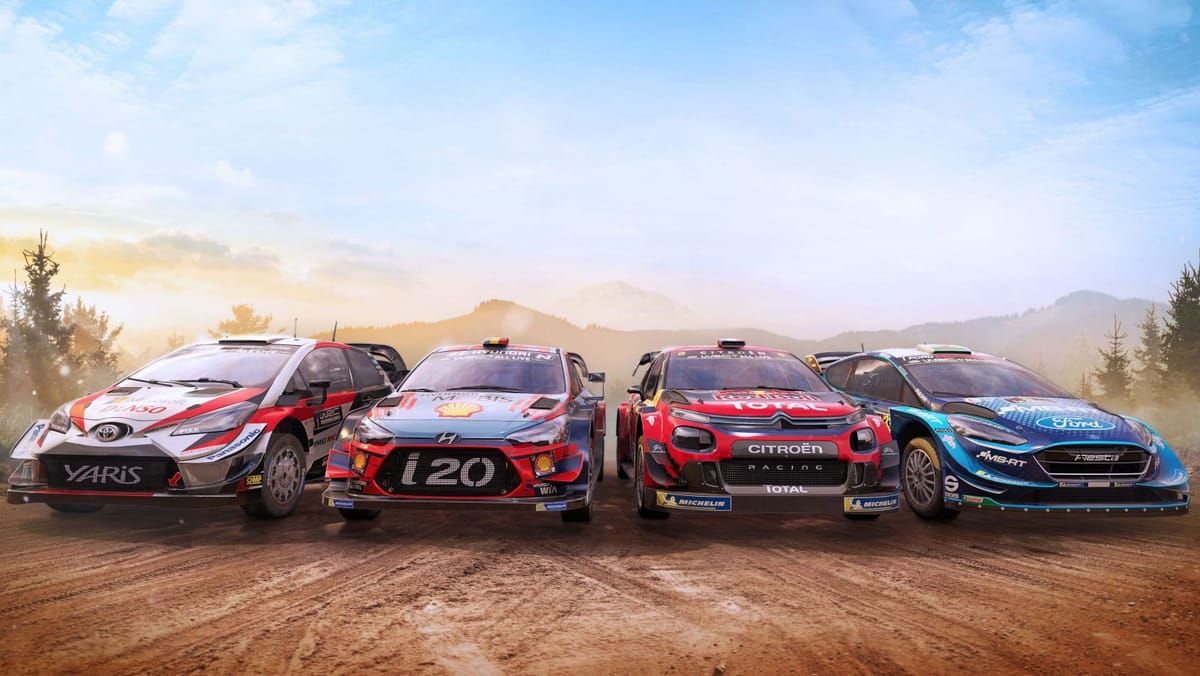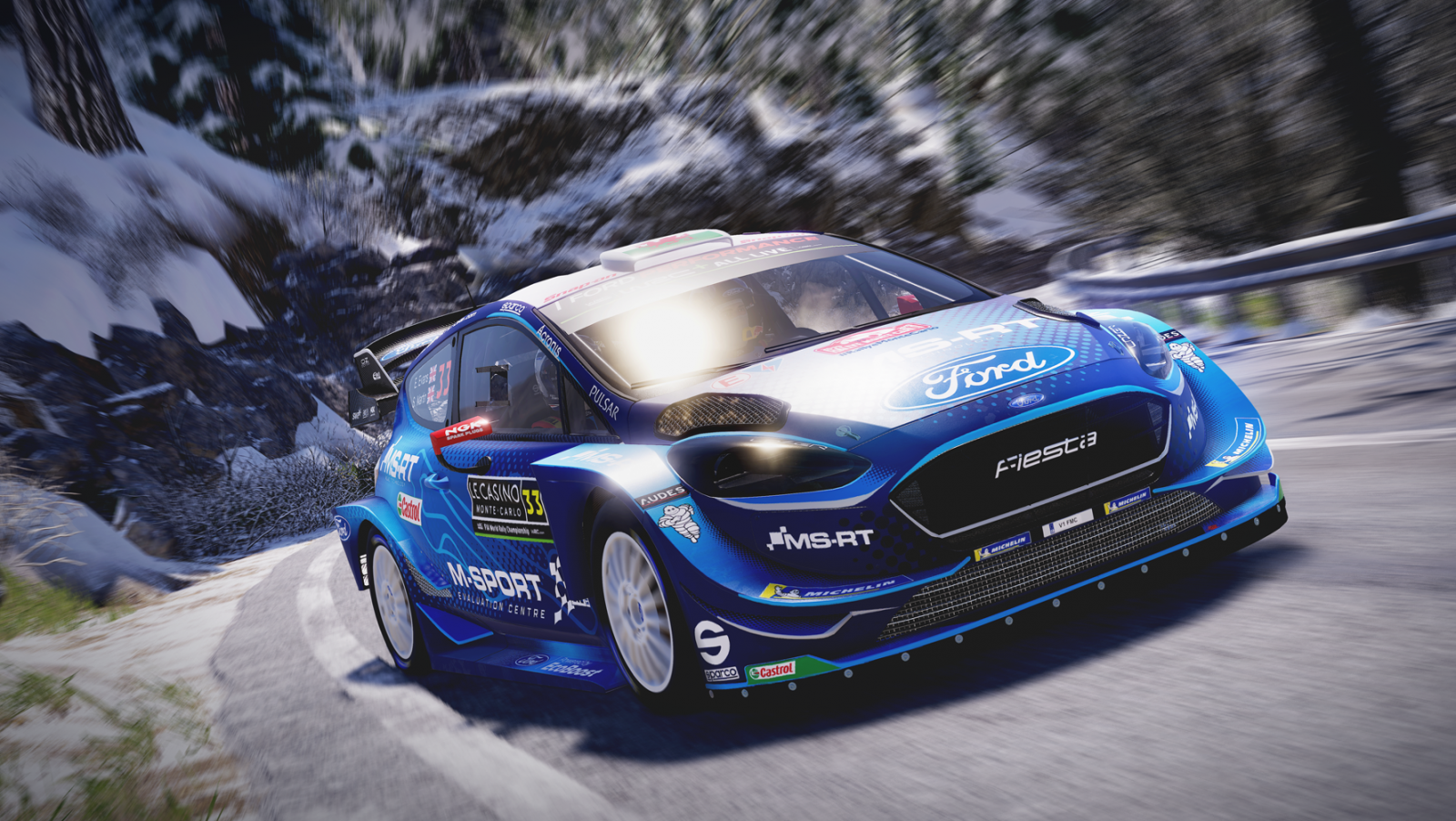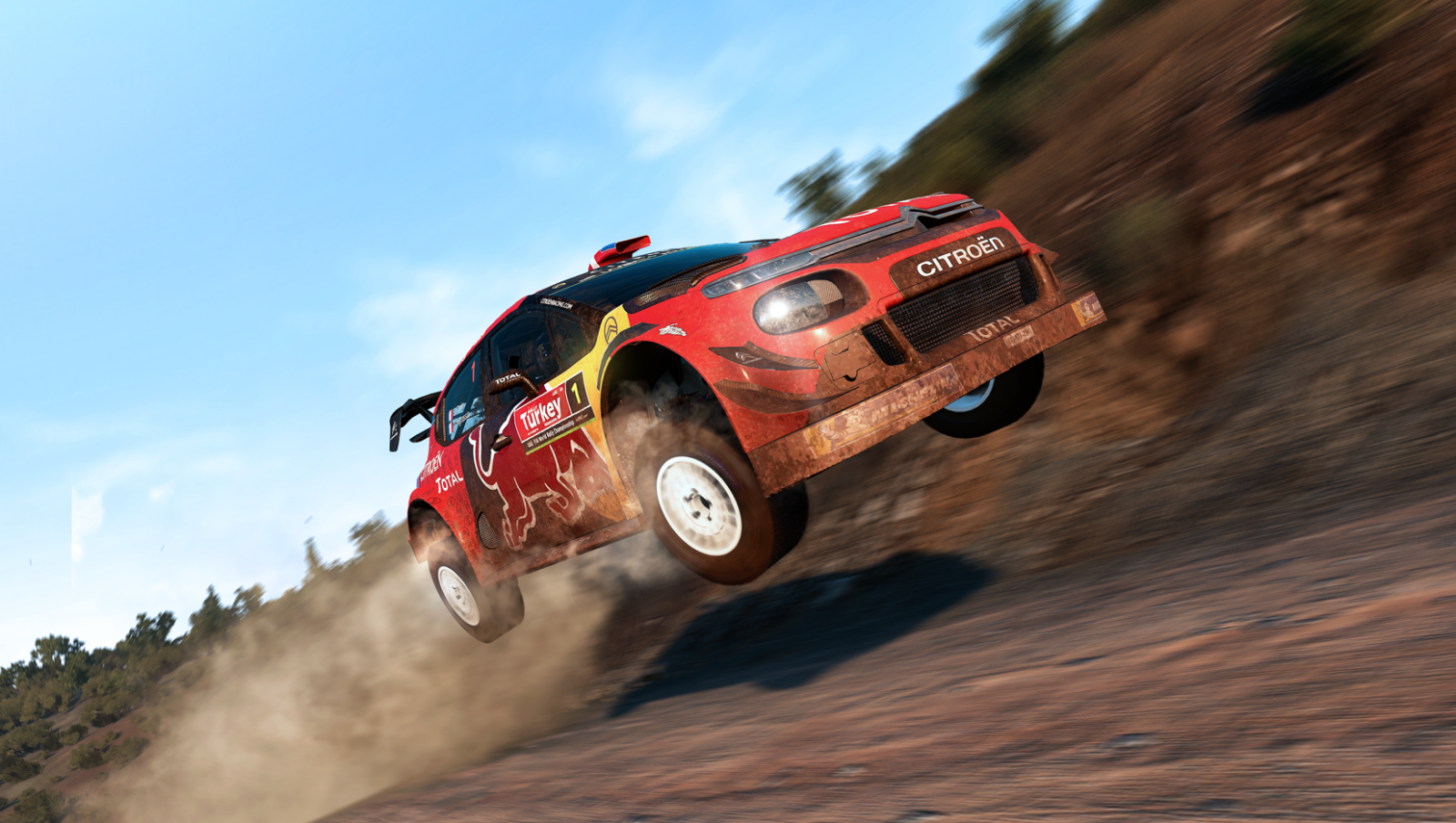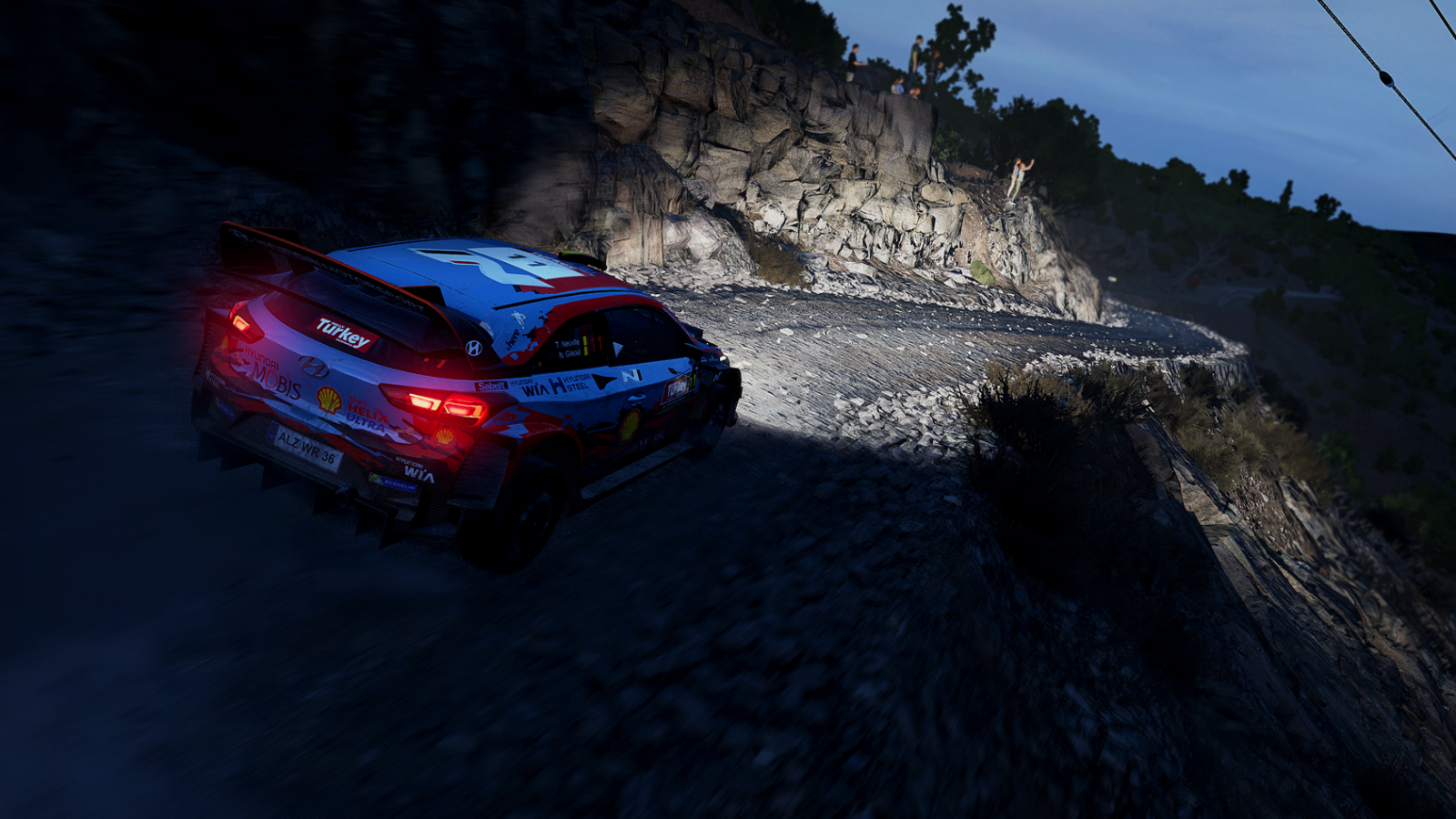
After taking a year off to bring new experiences to their World Rally Championship series, Kylotonn is back with WRC 8, and it’s got a lot to offer this time around. Make no mistake, WRC 8 is a rally racing game that takes being behind the wheel seriously. So serious that it took a year off to make sure that upon its return, it would outclass all those in its genre. I knew this game would offer a great deal of realism to the car’s level of detail and track orientation, and it didn’t disappoint.
I was excited to play this game as I’m a huge racing fanatic. Upon firing up WRC 8 on my PC via the Epic game app, I was impressed at the amount of game modes available to choose from. The UI is also well designed, making it easy to navigate through the many pages of game-modes available. I also noticed that there is a cool snap action that occurred when I changed pages and selected a game mode. Not only did it make selecting options extremely quick, but it makes it easier to select options when using a racing wheel. With WRC 8, players have the option of racing in Challenges, which are a series of on-line events that last a limited time during the week, pitting you against the best racing times in the world. These challenges range from driving in icy conditions, using a heavily damaged car, or simply reaching a checkpoint before the time runs out. There’s also Quickplay mode that allows you to jump into a quick race against the clock and online leaderboards, because that’s what rally racing is all about–beating the clock. The Season mode allows you to race on over one-hundred famous tracks that are staged throughout the world. This mode allows you to strictly keep the pedal to the medal without dealing with the bureaucracy of running a racing team. The online multiplayer, at this current time, is unavailable at the time of my review, but it will include weekly challenges and the return of WRC eSports.
The Training and Test modes are your typical race around the available tracks until you’re ready to take the training wheels off, and trust me, you’ll need them on for a while. And finally, the newest mode to appear in the WRC series: Career mode. This mode is an in-depth playthrough, not only allowing players to drive some of the fastest and most capable rally cars available, but to manage an entire team throughout a season. From hiring meteorologist, mechanics, engineers, an agent, and more, this gives players a real racing experience. I suggest that you play this mode last or until you can come to grips with the world of rally racing. Make no mistake about it, this game’s Season and Career modes have a great deal of depth to them, almost to the point that it becomes overwhelming. And with me being a noob to the WRC series, I started with the Training and Test modes.
These modes allowed me to progress in ways that made learning what rally driving is about, while making sure I could slide my four-wheeled drift machine around every corner in style and with speed. After choosing a car, a two-man team, and loading onto a dirt track that was filled with dangerous obstacles, I noticed how beautifully detailed and dynamic my car was. I was able to see the shocks and struts, roll cages, and my co-pilot with his notepad and written notes in the passenger seat. Yes, I said co-pilot. If you’ve never watched or played a rally series, you’ll know that the co-pilot is the most important tool when rallying. Because there’s no in-game map to view, it’s the co-pilots job to call out what you’re about to get yourself into. Without them, it’s almost impossible to know what type of corner, curve, kink, hairpin, jump, or obstacle to look out for. Aside from the highly detailed cars, there is a dynamic weather system, a damage system for the car, and a currency system that comes into play when you start the Career or Season modes. The dynamic weather had a direct influence on how the cars handled on the paved and unpaved roads, especially if you’ve chosen a front-wheel drive vehicle. While skidding around the test track with my four-wheel drive Renault, it began to rain, and the handling of my car became unbearable.
As I made my way around the wet, dirt test track, it was clear to me how intricate and precise the gameplay was. With the co-pilot yelling out directions that sounded like Hungarian to me, “right-5 keep into crest 50. Jump. Left 5 keep into crest, don’t cut,” I knew I had to do some homework. Unfortunately, there’s no way of learning what this racing jargon means without continuously racing and remembering or looking it up on the internet, but after a few hours of learning how to drive again and learning what my co-pilot was babbling about, I hopped into the WRC 8 Season mode. I created my avatar, set the difficulty, and chose a car class to race (Junior WRC or WRC 2 Privateer), the latter being for the more experienced, I chose the WRC 2 class and selected a contract. The contracts you accept determine how much money you’ll make for meeting its objectives, how experienced the mechanics are that work on your car, and the type of parts you can unlock for your car. As the timer counted down for me to launch my Citroen down the rocky road, I slammed the accelerator and crossed the start line before the timer hit zero and took on a time penalty. Apparently, you can jump the start and it will add on a ten-second penalty onto your final time. This happens a lot in this game as the rules are never explained. You’ll even incur time penalties for leaving the track for a small amount of time, and crashing.
Blasting down the winding, unpaved road, it’s clear that a steering wheel is the best way to experience this game, because you’ll need to control upshifts and downshifts, e-braking, driving input, and throttle/braking, all in a sequence of quick motions. Regardless, when you can blast down the road at one-hundred miles per hour, pull the e-brake to enter a hairpin, exit, hitting the apex perfectly, it’s a great feeling. But e-braking and kicking the back of the car out at high speeds can come at a price. I routinely broke the steering column, damaged the engine, wore out the turbo, or ruined the transmission, and it’s difficult to know what you’ve done to cause these damages as I never left the track. I guess it counts as normal wear and tear, but in just one race, my engine had lost thirty percent of its reliability. The car’s damage system isn’t perfect as it doesn’t accurately show you damage. I found that, regardless of what the indicator said was broken on the car, the car’s damage looked the same. Damaging the car also comes at a larger price. After completing two races, I was taken back to the garage where I could make repairs and changes to the car’s setup. Repairs add on penalty seconds which are added on to your end time. For a non-seasoned racer, this really hurts the experience. During one race session, I took on a seven-hundred and sixty-eight second penalty. That’s almost thirteen minutes of penalties. It’s almost impossible for a novice and medium leveled driver to come back from a deficit such as that.
After posting a few slower times that I don’t want to admit to, I finally was able to earn a respectable top three finish. But as I continued into the season, the dynamic weather conditions came into play and demanded that I change my car’s setup. Softening the springs, changing brake bias, adding more aero, and using studded tires were just a few options available when the world seemed to throw the worst weather conditions at me. This was the most fun I had as it tested my knowledge of car setups and driving abilities. After adjusting the setup, I could immediately feel the difference in the car’s handling. Every change made gives an immediate feedback to the player. A system that has been heavily tweaked since the last iteration. After becoming comfortable with the Season mode, I jumped into the Career mode. Unlike other game modes, Career mode explained its many options much more clearly. Each race completed nets you cash, XP points, and morale points for the team you must now manage. Points earned will be used on a very detailed skill tree that unlocks performance parts, better crew members to hire, the number of members you can hire, and more reliable parts. Upon starting the Career mode, I was given a choice of classes, WRC or WRC 2. If you choose WRC 2, you’ll have to complete a set of challenges to prove you’re worthy, and if you’re not, you are demoted to WRC with no option to go back to WRC 2. This game doesn’t pull any punches in telling you, you suck as a driver.
After completing the challenges, the Career mode walks you through the setup up your team by having me hire my first team member: a meteorologist. As his title states, he predicts the weather and help determine the car’s setup. Each member you choose for a job has a rank. The higher the rank, the better job they will do, and the more you must pay them. Once I had chosen my team, I chose a specific car manufacturer. I chose Ford as they were the manufacturer I was most familiar with. Take note, if you don’t live up to the contract you sign with that manufacturer, they will drop you. Choosing my first contract cost me $5,000 of my $15,000 I began with and knowing that you must pay your employees adds a sense of pressure. It really puts you in the shoes of the manager and driver. My first race was an extreme conditions event. This event takes you out of your pristine car and puts you in a damaged car, where you must race to the end before the time’s up. These types of events break the monotony of Career mode so that it doesn’t just seem like a glorified Season mode. So far, I’ve devoted about thirty hours into Career mode and it still offers a good challenge and new options to experience.
All isn’t perfect with the game. Though the cars look amazing, the worlds I raced in could use a bit more detail. I noticed a lot of flickering from trees and grass, where anti-aliasing hadn’t smoothed out the edges enough to stop the staircasing on those objects. Also, the way my car reacted to bumps, jumps, and uneven parts of the road felt unnatural, almost as if the world had the gravity of the moon. It’s difficult to tell if it’s the overall setup of each car or the way objects react to hitting one another’s collision box, but I never felt like I had full control. I even had my car launch above the tree line when I hit a bump going forty miles-per hour. The biggest hiccup that would plague the game was the co-pilot’s late reading of the upcoming obstacle. Too often would I being flying down an uneven road and get no instructions until I’d lost control from trying to break too hard to make the turn. WRC 8 is currently available in the Epic games store.
WRC World Rally Championship 8
Great
The year that Kylotonn took to get WRC 8 back into the top contenders of rally games was worth it. Its Career mode alone is enough to make you sit down for hours and plan out how to manage your team, drive your car, and meet the conditions of your contract. With the car’s level of detail being extremely high, decent driving mechanics, and the bevvy of game modes being at an all-time high, this is a racing game that any fan of racing should absolutely try.
Pros
- Rich Career mode
- Highly detailed cars
- A lot of tracks to race on
- Car's driving mechanics are strong
Cons
- World detail isn't great
- Problem with collision system
- Co-pilot isn't heard in all game modes




